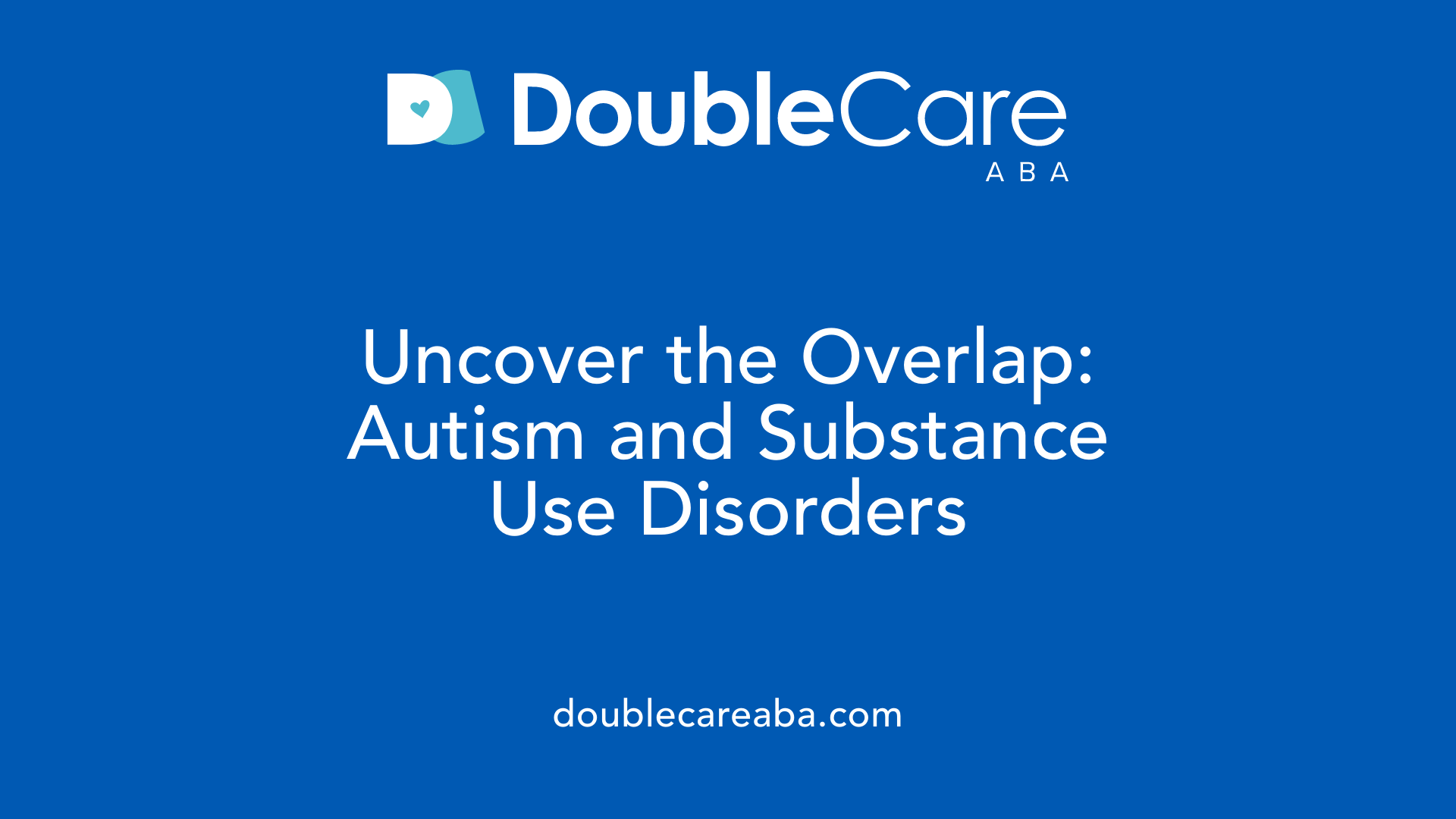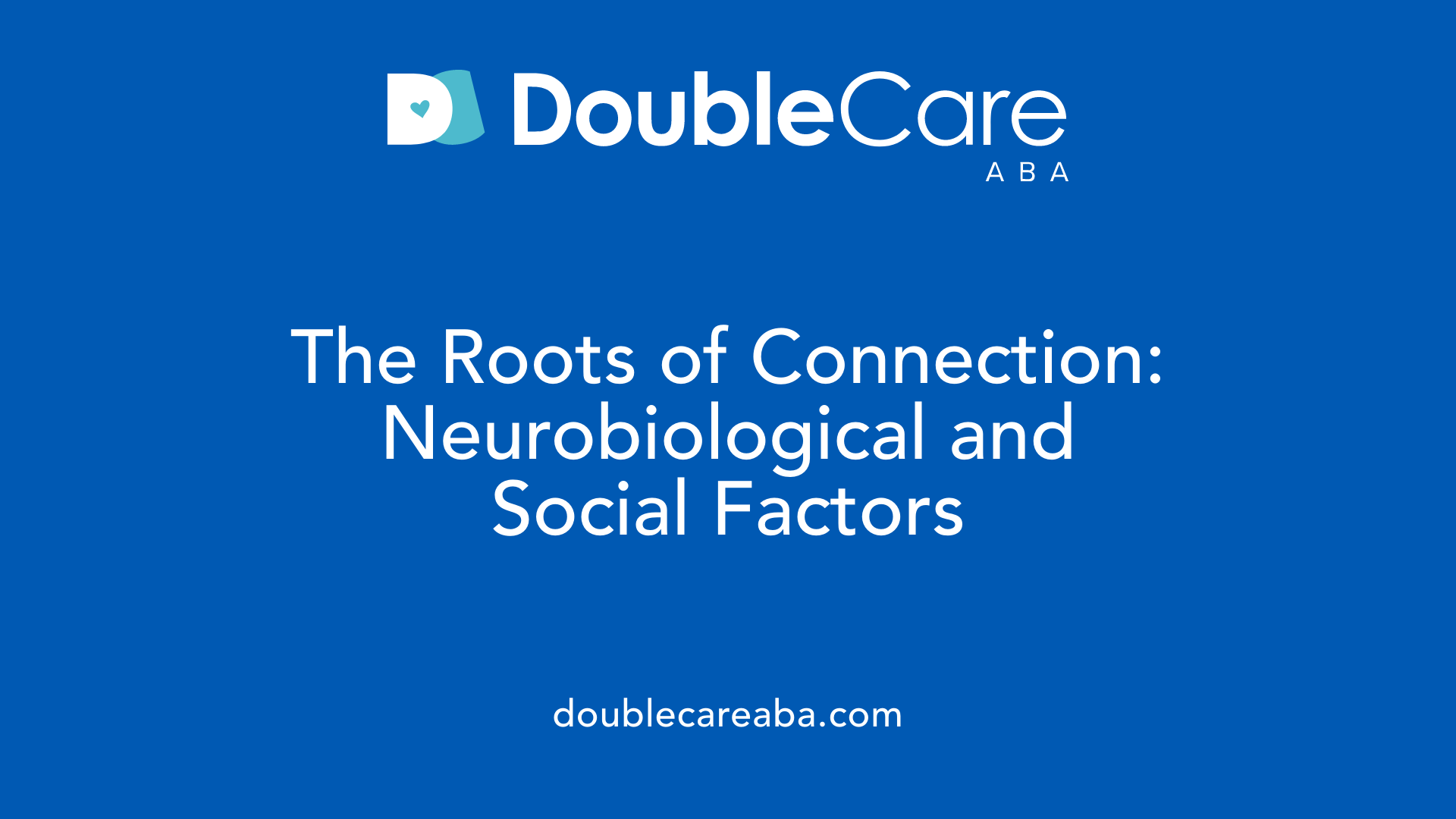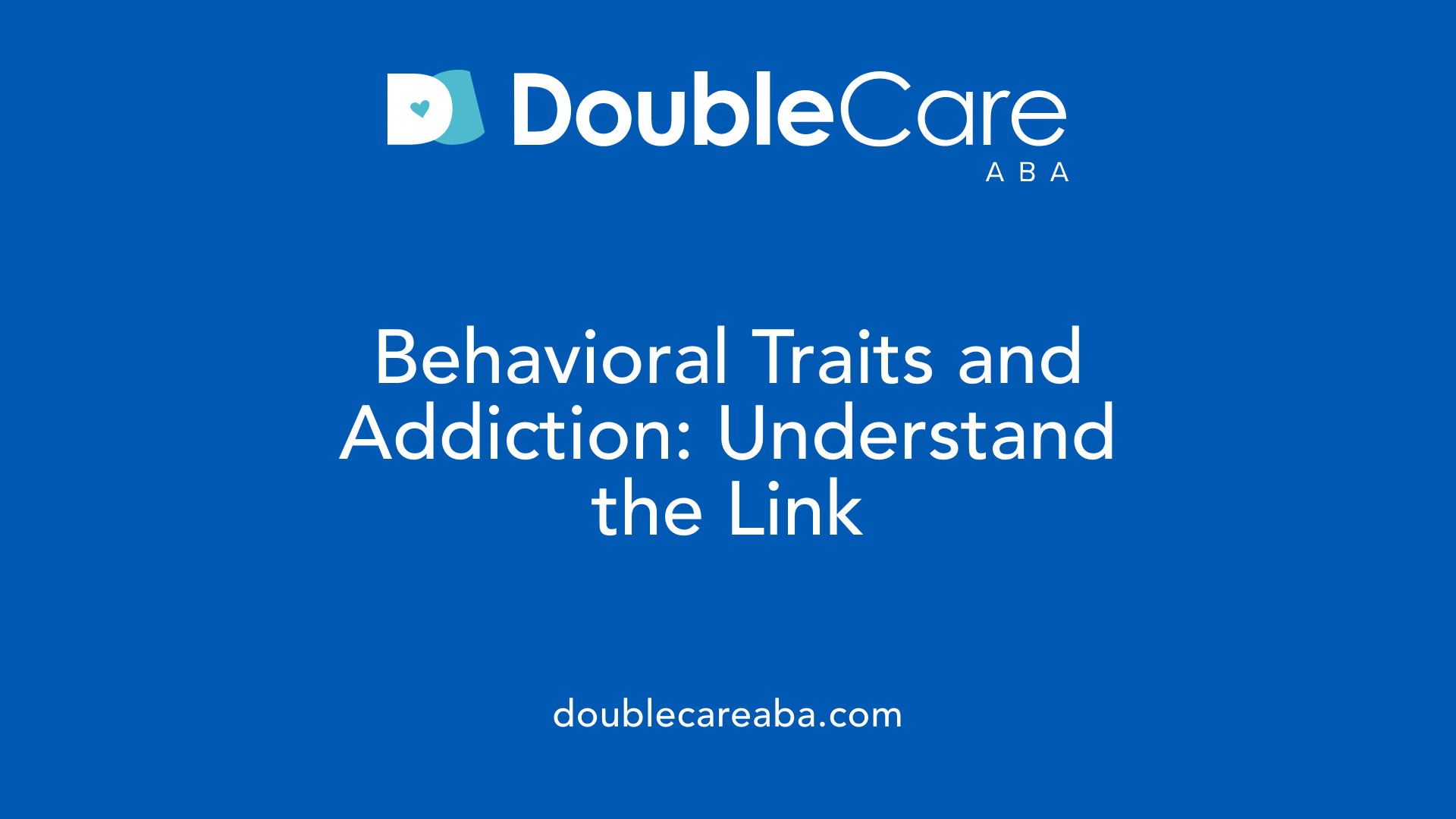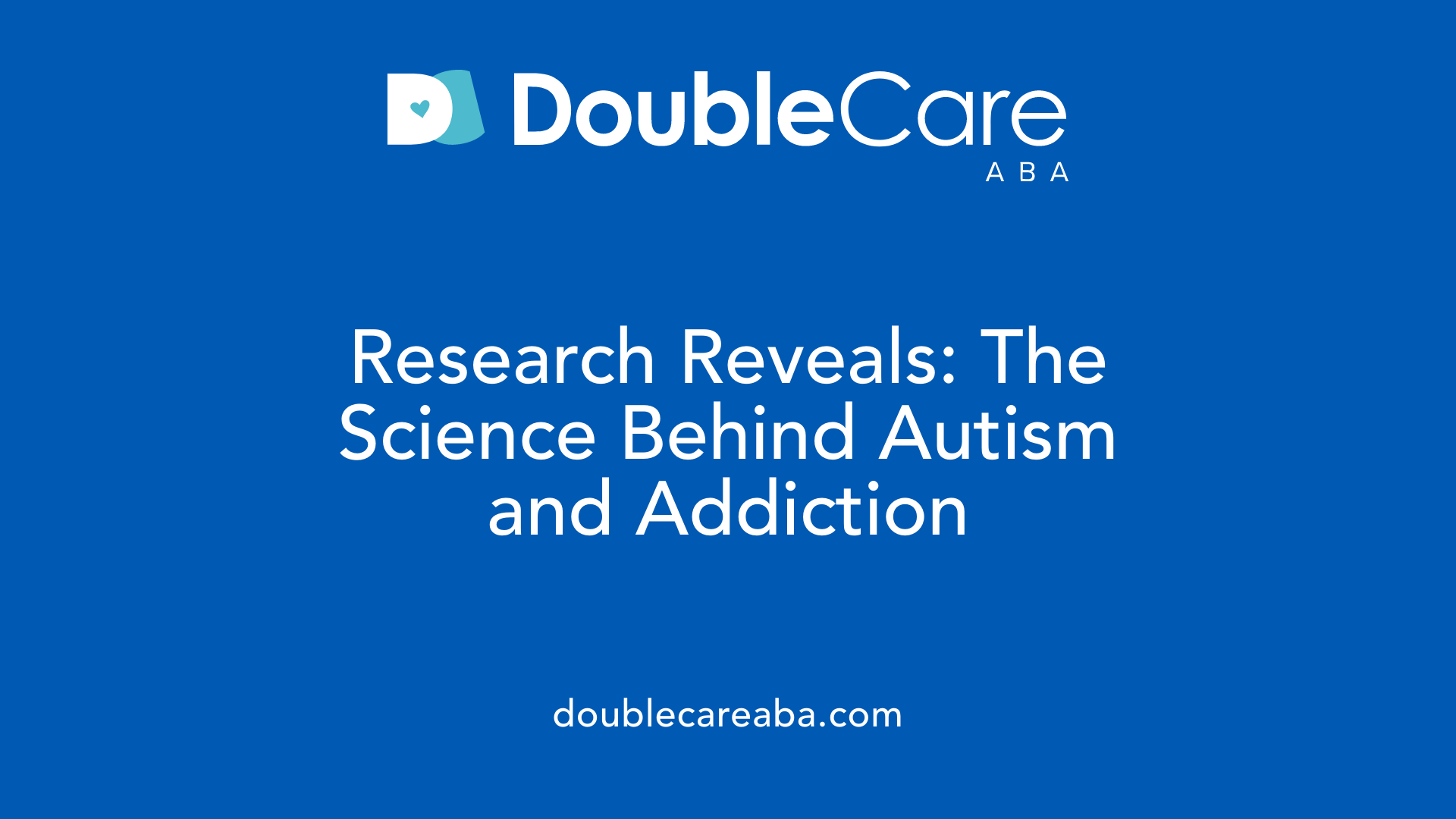Exploring How Autism Spectrum Traits Influence Addiction Risks and Management
Recent research highlights a significant and nuanced connection between autism spectrum disorder (ASD) and increased prevalence of addiction. Recognizing the underlying neurobiological, behavioral, and social factors helps inform targeted prevention and treatment strategies. This article delves into the interconnectedness of autism and addiction, examining prevalence rates, risk factors, scientific insights, and effective interventions tailored to this unique population.
Prevalence and Risk of Co-occurring Autism and Substance Use Disorders

What are the prevalence rates of co-occurring autism and substance use disorders?
Research indicates that the occurrence of substance use disorders (SUD) in individuals with autism spectrum disorder (ASD) varies significantly across different studies and populations. Overall, prevalence rates can range from as low as 0.7% to as high as 36%, depending on the sample size, population characteristics, and the specific definitions of SUD used.
Population-based studies, such as one conducted in Sweden, have provided more detailed insights. These studies show that individuals with ASD are nearly twice as likely to experience substance-related problems compared to those without autism. The odds ratios in such studies are often around 2.0, with some reaching as high as 2.6 after statistical adjustments for confounding factors.
When breaking down the types of substance use, the highest risks are associated with drug use disorders, which have odds ratios around 5.6. Tobacco use disorder and alcohol use disorder follow, with odds ratios approximately 4.6 and 3.1 respectively. These findings underline the heightened vulnerability of autistic individuals to various forms of substance misuse.
Further complicating the picture are comorbid mental health conditions. For example, attention-deficit/hyperactivity disorder (ADHD) often co-occurs with ASD and significantly increases the risk of developing SUD. In such cases, odds ratios for substance abuse can reach up to 8.3, demonstrating a profound interconnectedness of these conditions.
Additionally, recent research highlights that approximately 20% of young adults undergoing treatment for alcohol or drug use exhibit elevated autistic traits. This underscores the importance of screening and tailored interventions.
Heavy episodic drinking, defined as binge drinking with five or more drinks per occasion, is also notably prevalent among autistic adults. Studies suggest that about 54% of autistic adults engage in heavy drinking episodes, primarily motivated by social reasons or to enhance positive feelings.
In summary, the overlap between autism and substance use issues is substantial and multi-faceted. The variation in prevalence figures illustrates the complexity of diagnosing and understanding these co-occurring conditions, emphasizing the need for targeted research and personalized treatment approaches.
Neurobiological, Genetic, and Social Underpinnings of the Connection

What neurological, genetic, behavioral, and social factors link autism and addiction?
Research shows a complex relationship between autism spectrum disorder (ASD) and addiction, driven by a mixture of neurobiological, genetic, behavioral, and social influences. These aspects collectively increase vulnerability to both substance use and behavioral addictions.
Neurobiologically, certain neural pathways involved in reward and impulsivity play a crucial role. In autistic individuals, the circuits within the striatum and basal ganglia—areas associated with habit formation, pleasure, and reward—may function differently. These differences can impair self-regulation and increase impulsive behaviors, making substances or compulsive activities more tempting. The signaling pathways involving neurotransmitters like dopamine and oxytocin are also implicated. Dopamine, central to reward processing, may be dysregulated, contributing to increased seeking of pleasurable stimuli, including drugs.
Genetic factors further influence the risk of addiction among autistic individuals. Shared genetic links, such as genes involved in Rett syndrome and fragile X syndrome, have been identified in some studies. These genetic vulnerabilities can affect neural development and functioning, creating a predisposition to both autism traits and addictive behaviors. Family history of substance abuse and mental health conditions can also heighten susceptibility.
Behavioral traits common in autism, such as repetitive behaviors, obsessive tendencies, and sensory overload, can serve as both coping mechanisms and risk factors for addiction. Many autistic individuals seek out substances like alcohol, marijuana, or prescription medications to manage intense emotions, social anxiety, or sensory sensitivities. These substances can provide temporary relief but also lead to dependence.
Social factors significantly shape the likelihood of addiction in those with autism. Challenges such as social anxiety, rejection, and peer pressure often motivate individuals to use substances to facilitate social engagement or reduce feelings of loneliness. The desire to fit in or gain social acceptance can lead to experimenting with drugs or engaging in addictive behaviors like gaming or gambling.
Additional influences include co-occurring conditions like ADHD, which can amplify impulsivity and the urge for immediate relief from overwhelming feelings. Environmental factors, such as family dynamics and community support, also matter. Lack of tailored interventions and understanding can leave autistic individuals more exposed to risky behaviors.
The interplay of these neurobiological, genetic, behavioral, and social facets makes the connection between autism and addiction particularly complex. Understanding this web of factors is vital for developing effective, personalized treatment strategies that address both conditions comprehensively.
| Aspect | Description | Impact on Autism and Addiction |
|---|---|---|
| Neural pathways | Reward system, impulsivity circuits in brain | Dysregulation increases risk of seeking substances or compulsive acts |
| Genetic predisposition | Genes related to Rett syndrome, fragile X syndrome | Shared vulnerabilities influencing neurodevelopment and behavior |
| Behavioral traits | Repetitive behaviors, obsessive tendencies, sensory issues | Coping mechanisms that may lead to dependence |
| Social influences | Anxiety, rejection, peer pressure | Drive to fit in or alleviate negative feelings |
| Co-occurring conditions | ADHD, anxiety, OCD | Heightened impulsivity and compulsivity |
Understanding these interconnected factors aids clinicians and caregivers in creating more targeted, compassionate interventions. Addressing neurobiological and social dimensions together can improve outcomes for autistic individuals grappling with addiction.
Behavioral Traits and Their Relationship to Addiction

How do behavioral traits associated with autism relate to addiction?
Autistic individuals often exhibit behavioral patterns such as impulsivity, obsessive tendencies, and a strong preference for routines and repetitive actions. These traits are deeply intertwined with their susceptibility to various forms of addiction.
Impulsivity and obsessive behaviors can lead to immediate gratification pursuits, such as the use of alcohol, drugs, or engaging in compulsive behaviors like internet gaming, gambling, or shopping. These activities may serve as quick fixes to manage intense emotions, social anxiety, or sensory overload.
Repetitive behaviors and a need for structured routines can also contribute to inflexible patterns of substance use. For example, a person may repeatedly use substances in a predictable manner to feel a sense of control or predictability in their environment. These habitual behaviors resemble the neural mechanisms governing pleasure and reinforcement, often involving circuits within the basal ganglia and the striatum.
The tendency to use substances or behavioral addictions as coping mechanisms is frequently driven by underlying mental health conditions common in autism, such as anxiety, depression, attention deficit hyperactivity disorder (ADHD), or obsessive-compulsive disorder (OCD). These co-occurring disorders can exacerbate reliance on addictive behaviors as they serve as forms of self-medication.
Research indicates that these traits are associated with shared neurochemical pathways. For example, dysregulation in dopamine and oxytocin signaling within reward circuits may reinforce both autistic behaviors and addictive tendencies.
Overall, these interconnected behavioral traits and coping strategies heighten the risk of addiction. While some autistic individuals might turn to substances or addictive behaviors to alleviate emotional distress, the overlap in neurobiological mechanisms suggests a complex and bidirectional relationship. Further research is essential to explore and disentangle these factors to develop targeted interventions.
| Behavioral Traits | Connection to Addiction | Underlying Neural Mechanisms |
|---|---|---|
| Impulsivity | Increased risk of substance use and behavioral addictions | Dysregulation in reward pathways involving dopamine |
| Obsessive tendencies | Repetitive substance use and compulsive behaviors | Neural circuits within basal ganglia and striatum |
| Routine seeking | Inflexible substance consumption patterns | Reinforcement in habit-forming neural circuits |
| Difficulties with emotion regulation | Self-medication via substances | Dysfunctions in limbic system and prefrontal cortex |
Use of substances as coping mechanisms
Many autistic individuals use substances such as alcohol, marijuana, or prescription medications to manage their anxiety, sensory sensitivities, or emotional dysregulation. For example, alcohol and marijuana are often chosen to facilitate social engagement or induce relaxation. These substances may temporarily reduce feelings of social anxiety or sensory overload, creating a false sense of control or calm.
However, reliance on these coping strategies can develop into addiction, especially when used excessively or in place of healthier social or emotional regulation techniques. Individuals with autism may also turn to substances after trauma, such as bullying or abuse, seeking a temporary refuge from emotional pain.
Repetitive behaviors and addiction
Repetitive and stereotyped behaviors are hallmark features of autism. These include actions like hand-flapping, lining up objects, or persistent routines. Such behaviors may share common neural underpinnings with addiction, involving circuits that govern habit formation and reward processing.
This shared neurobiology suggests that the same mechanisms fostering repetitive behaviors in autism can facilitate the development of compulsive substance use or behavioral addictions. These activities provide predictability and control, which are often difficult to achieve in other areas of life.
In sum, the intersecting traits of impulsivity, obsession, and routine seeking create a fertile ground for addiction in autistic individuals. Recognizing these patterns can inform tailored treatment strategies that address both core autism features and comorbid addictive behaviors.
Why Substance Use Appears Common Among Autistic Individuals

Why do some autistic individuals turn to substance use?
Many autistic individuals resort to substance use as a way to manage various internal and external challenges they face. For some, substances like alcohol, marijuana, or prescription medications serve as a form of self-medication. These substances can help soothe sensory overload, alleviate intense anxiety, or ease symptoms of depression, providing a temporary escape from overwhelming emotions or environments.
Autistic traits such as repetitive behaviors and hyper-focus tendencies may also increase the likelihood of developing substance use disorders. When individuals seek relief from overstimulation, hyperactivity, or emotional distress, they might experiment with drugs or alcohol as a way to find comfort.
Social scenarios can be particularly stressful for autistic individuals, who often experience social anxiety and difficulties with communication. Many resort to substances to facilitate social engagement, break down social barriers, or mask their autistic traits, aiming to fit in with peer groups. This process, known as masking, can lead to increased substance use, especially if the individual perceives it as a tool to navigate social situations more effectively.
Impulsivity and co-occurring mental health conditions, such as Attention Deficit Hyperactivity Disorder (ADHD), further contribute to higher addiction risks. Impulsive behaviors are common in both autism and addiction, which can lead to risky substance use behaviors without considering long-term consequences.
Additionally, inadequate mental health support and societal misunderstandings can exacerbate these tendencies. When access to tailored mental health care is limited, individuals may turn more frequently to substances for relief.
It is important to recognize that not all autistic individuals develop substance use issues. Many manage their symptoms with appropriate support, therapies, and social integration efforts. Understanding these underlying reasons helps in developing targeted interventions, reducing the risk of addiction and improving overall wellbeing.
Scientific Research and Evidence Linking Autism and Addiction

What scientific research exists on the connection between autism and addiction?
Numerous studies and reviews have explored the relationship between autism spectrum disorder (ASD) and substance use or addiction. Research shows that autistic individuals often engage in substance use, including alcohol, marijuana, stimulants, opioids, and misuse of prescription medications like benzodiazepines. These behaviors are frequently motivated by efforts to manage sensory overload, anxiety, depression, or to help with social connection.
Research from institutions such as the University of Cambridge and various systematic reviews highlight that autistic individuals have a nearly twofold higher prevalence of substance use disorder (SUD) compared to the general population. For example, a study involving young adults reported that approximately 20% of those treated for alcohol or drug issues had undiagnosed autistic traits, underscoring the importance of screening for autism in substance use treatment settings.
Findings also suggest that individuals with ASD may use substances like alcohol or marijuana as a way to facilitate social engagement, relax, or manage intense emotions and social anxiety. Many autistic adolescents and adults turn to substances for relief from feelings of social isolation or sensory sensitivities, which can lead to dependence.
Genetic and neurochemical research further illuminates the connection. Shared genetic links, involving genes associated with Rett syndrome and fragile X syndrome, and overlapping neurochemical pathways involving reward circuits like the striatum, dopamine, and oxytocin, indicate common biological underpinnings. Traits such as impulsivity and compulsivity, characteristic of both autism and addictive behaviors, are linked to neural mechanisms within the basal ganglia and striatum, areas involved in habitual behaviors and reward processing.
In addition, comorbid mental health conditions—such as ADHD, OCD, anxiety, and depression—are common in autistic individuals and may drive substance use as self-medication. High anxiety levels, racing thoughts, and ruminations often lead autistic individuals to seek relief through substances that can slow or block these symptoms.
The evidence supports the notion that autism and addiction are linked through complex biological, psychological, and social pathways. This necessitates tailored approaches in treatment, addressing the unique needs of autistic individuals.
How does research define and measure substance use in autistic populations?
Research employs tools like the Social Responsiveness Scale-2 (SRS-2) to measure social impairment and identify autistic traits, especially in clinical settings for substance use. Studies also analyze prevalence rates from psychiatric clinics and community samples, revealing that high percentages—up to 36%—of autistic individuals may struggle with substance abuse issues.
Some investigations focus on specific substances. For instance, a Swedish registry study showed increased risks of problems related to alcohol, cannabis, and other drugs among individuals with OCD and autism. The types of substances used often relate to preferred coping strategies, such as alcohol to reduce social anxiety, or stimulants to manage attention difficulties.
Research also highlights the significance of early diagnosis and support. Young adults with high SRS-2 scores are nearly eight times more likely to develop stimulant-use disorder and five times more at risk for opioid-use disorder.
Effectiveness of tailored interventions
Interventions tailored for autistic populations are crucial. A notable approach involves manualized group treatments based on cognitive-behavioral therapy (CBT). A recent study evaluated such a program specifically designed for individuals with both ASD and SUD, showing promising results.
Participants experienced significant reductions in alcohol use, cravings, and symptoms of depression, anxiety, and stress. These improvements persisted at least three months after the treatment ended, demonstrating the potential for sustained benefits.
Effective strategies need to consider sensory sensitivities, communication styles, and executive functioning challenges common among autistic individuals. Incorporating autism-specific training for healthcare providers, family involvement, sensory-friendly environments, mindfulness-based therapies, and holistic approaches enhances treatment outcomes.
The way forward
While progress has been made, further research is required to understand causality better and develop interventions that are both effective and accessible. Increased screening for autism in substance use settings and training clinicians to recognize autism traits are vital steps.
Multi-disciplinary and individualized support, addressing comorbid conditions and psychological needs, remains essential. The complex interplay between autism and addiction underlines the need for continuous, evidence-based approaches that can improve quality of life and reduce harm for autistic individuals.
| Aspect | Details | Additional notes |
|---|---|---|
| Prevalence of Substance Use | Up to 36% of autistic individuals face issues with SUD | Higher than general population |
| Motivations | Self-medication for anxiety, social facilitation | Use of alcohol, marijuana, prescription drugs |
| Genetic & Neurochemical Links | Shared gene markers; reward circuitry involved | Overlap involves dopamine, oxytocin, striatum |
| Treatment Approaches | Tailored CBT, family support, sensory adaptation | Promising long-term outcomes |
| Screening & Diagnosis | Using tools like SRS-2; early detection | Crucial for targeted intervention |
| Future Directions | More research, clinician training, personalized care | Ongoing need to address complex needs |
Understanding the complex relationship between autism and addiction emphasizes the importance of comprehensive, sensitive, and individualized treatment plans. Supporting autistic individuals through tailored interventions can help mitigate the risks of substance use and improve overall well-being.
Treatment Approaches Careful of Autism Traits
What are the treatment options for individuals with both autism and addiction?
Managing co-occurring autism spectrum disorder (ASD) and substance use disorder (SUD) requires a careful, tailored approach. Because of the unique characteristics of autism—such as sensory sensitivities, communication difficulties, and behavioral patterns—treatments must be adapted to meet individual needs.
Integrated treatment strategies that simultaneously address both autism and addiction are most effective. Evidence-based therapies like Cognitive Behavioral Therapy (CBT) form the foundation, but these are often modified to accommodate sensory issues and promote visual learning. For example, therapists might incorporate visual aids, social stories, and step-by-step instructions to facilitate understanding and engagement.
In addition to CBT, programs may involve emotion regulation techniques, such as Dialectical Behavior Therapy (DBT), which help individuals manage high anxiety, impulsivity, and intense emotional reactions. These methods are especially valuable given that many autistic individuals experience heightened anxiety and difficulty in self-regulation.
Family involvement plays a crucial role in treatment. Family-based approaches like Community Reinforcement and Family Training (CRAFT) can support recovery by strengthening familial support systems, improving communication, and reducing stigma. Educating families about autism traits and addiction helps create a supportive environment conducive to long-term success.
Environmental considerations are also essential. Sensory-friendly spaces, structured routines, and predictable environments reduce stress and help manage potential triggers for both autism symptoms and substance use. Pacing therapies and gradual exposure are often necessary to prevent overwhelm.
Recent advancements include the development of manualized group treatments specifically designed for autistic populations, showing promising results in reducing substance use and related symptoms. These protocols emphasize flexibility, patience, and personalization.
Overall, the most effective approach involves a multidisciplinary team working collaboratively to craft a personalized plan that considers the individual’s sensory, communication, and emotional needs. Ongoing research continues to refine these methods, emphasizing the importance of bespoke treatments rather than one-size-fits-all solutions.
Impact of Autism Traits on Substance Use Assessments and Interventions
How might autism traits influence substance use assessments?
Autism traits can significantly shape how individuals perceive, experience, and respond to assessments related to substance use. Many autistic people might use substances such as alcohol or marijuana to manage sensory overload, intense emotions, or social anxiety—factors that make standard assessment questions less straightforward. Their unique motivations for substance use, like self-medication, may not be easily identified through conventional tools designed for neurotypical populations.
Communication differences further complicate the accuracy of assessments. Autistic individuals often have distinctive ways of expressing themselves or may find it difficult to articulate their experiences, which can lead to underreporting or misinterpretation of their substance use patterns. Sensory sensitivities or rigid thinking might influence how they respond to questions about cravings, triggers, or behaviors.
Moreover, co-occurring conditions common in autism, such as ADHD, anxiety, or depression, add layers of complexity. These conditions may influence substance use behaviors and should be considered during evaluation. For example, impulsivity linked to ADHD can increase the likelihood of binge drinking or experimenting with substances.
Without an understanding of these factors, clinicians risk missing crucial details, leading to incomplete assessments. Hence, the accuracy of substance use evaluations depends greatly on recognizing how autism traits can alter typical responses and behaviors.
Why are tailored approaches important in treatment?
Considering autism traits in treatment planning enhances the effectiveness of interventions. Tailored approaches facilitate better engagement, comprehension, and adherence among autistic individuals. For example, modified cognitive-behavioral therapy (CBT) incorporating autism-specific elements, such as visual aids or structured routines, has shown promising results.
A personalized approach also involves assessing sensory sensitivities or communication preferences. Some individuals may benefit from sensory-friendly environments or alternative communication methods, such as picture boards or digital apps, that accommodate their needs.
Integrating family involvement and support systems can reinforce treatment gains, especially when communication styles differ. Clinicians trained in autism spectrum disorders are better equipped to recognize signs of internal stress or resistance that may not be verbally expressed.
Developing individualized treatment plans that address both autism and substance use helps improve long-term outcomes, reduce relapse, and promote overall well-being.
What adjustments are necessary for communication and sensitivities?
Effective assessment and intervention require adjustments that respect the sensory, communicative, and emotional sensitivities of autistic individuals. For example, clinicians should use clear, concrete language and avoid figurative speech that might be confusing.
Visual supports, such as charts or cue cards, can aid understanding and self-expression. Allowing extra time for responses and creating a predictable, calming environment also minimize anxiety and sensory overload.
Incorporating mindfulness-based therapies can help address anxiety and impulsivity, common challenges in autism. Sensory accommodations, like dim lighting or noise reduction, help facilitate more accurate communication and engagement.
Staff training in autism-sensitive communication and understanding of sensory sensitivities is crucial. Tailoring assessment processes to include these considerations ensures that responses genuinely reflect the individual's experiences, leading to more effective treatment pathways.
| Aspect | Adjustment | Purpose |
|---|---|---|
| Communication Style | Use concrete, simple language | Reduce misunderstandings |
| Visual Aids | Incorporate charts, pictures | Enhance clarity and recall |
| Environment | Sensory-friendly setup, reduce stimuli | Alleviate sensory overload |
| Response Time | Allow extra response time | Encourage thoughtful responses |
| Therapy Techniques | Mindfulness, body-awareness | Address anxiety, impulsivity |
| Staff Training | Autism-specific communication skills | Improve assessment accuracy |
Towards Better Support and Outcomes for Autistic Individuals Facing Addiction
Understanding the complex relationship between autism and addiction is crucial for developing effective prevention, assessment, and treatment strategies. Recognizing the neurobiological, behavioral, and social factors that contribute to this connection allows clinicians and support systems to tailor their approaches, addressing unique challenges faced by autistic individuals. With ongoing research and specialized interventions, it is possible to improve quality of life, reduce relapse rates, and foster resilience among this vulnerable population. Continued support from family, healthcare providers, and community resources is essential to promote healing, understanding, and long-term recovery.
References
- Patients With Autism Spectrum Disorder and Co-occurring ...
- Autism and Substance Addiction - Attwood & Garnett Events
- Autism and Addiction: Understanding the Connection | Autism360
- Autism and Addiction's Close Connection - ABATherapistJobs.com
- Autism and Addiction: Is There a Link? | Zinnia Health
- Behavioral addiction and autism spectrum disorder: A systematic ...
- Study explores possible autism link in teens treated for addiction
- The Link Between High-Functioning Autism and Addiction in Teens ...
- Patients With Autism Spectrum Disorder and Co-occurring ...















